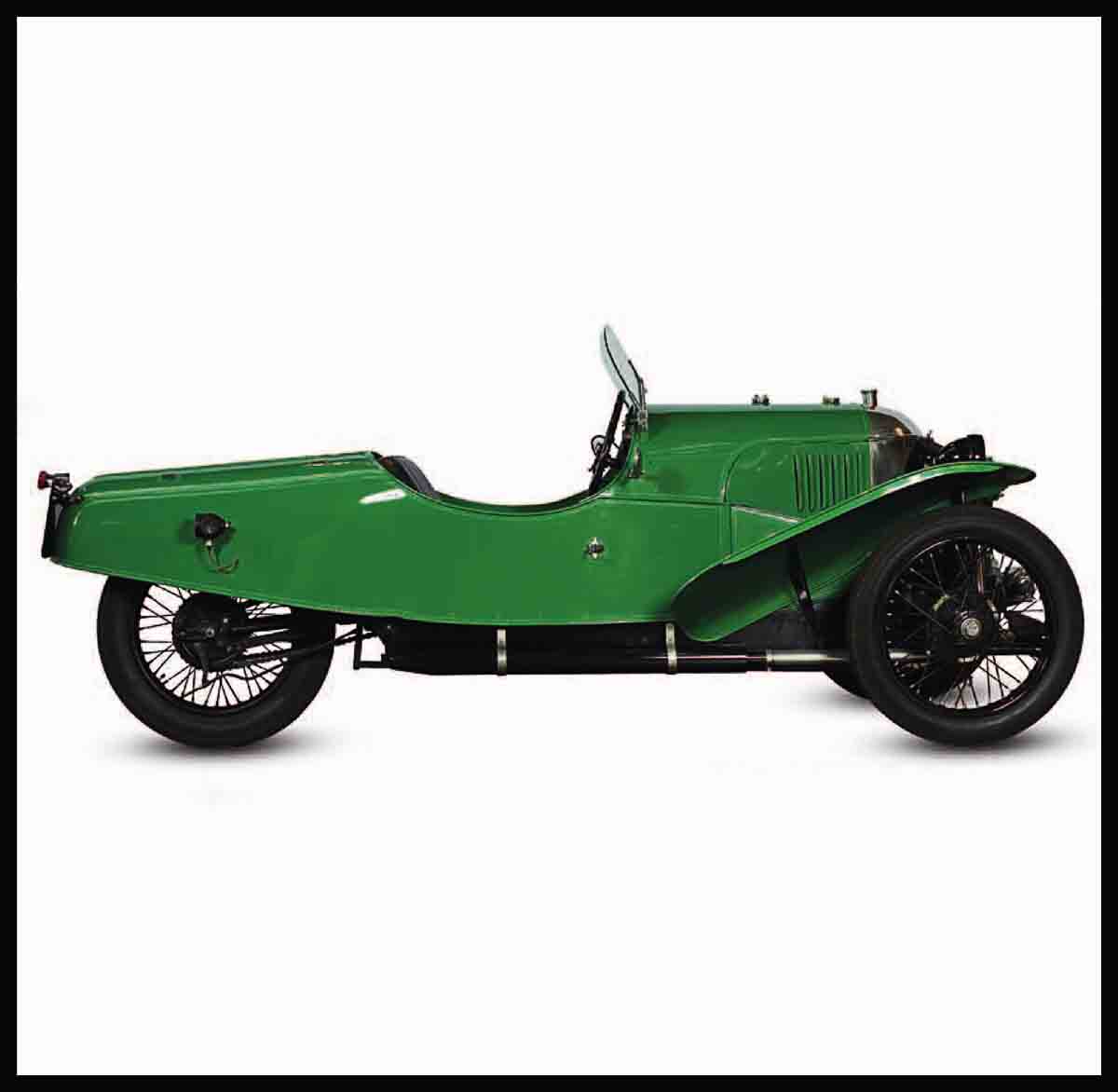
Small Cars
In the 1920s manufacturers competed to produce practical motor cars at prices the middle classes could afford, finally enabling car ownership to extend beyond the wealthy elite. Some of these vehicles were terribly primitive, others almost too small to be usable. But there were also those that showed the way in which small cars would develop, with four-cylinder engines, four wheels, and brakes on each wheel.
Tamplin, 1919
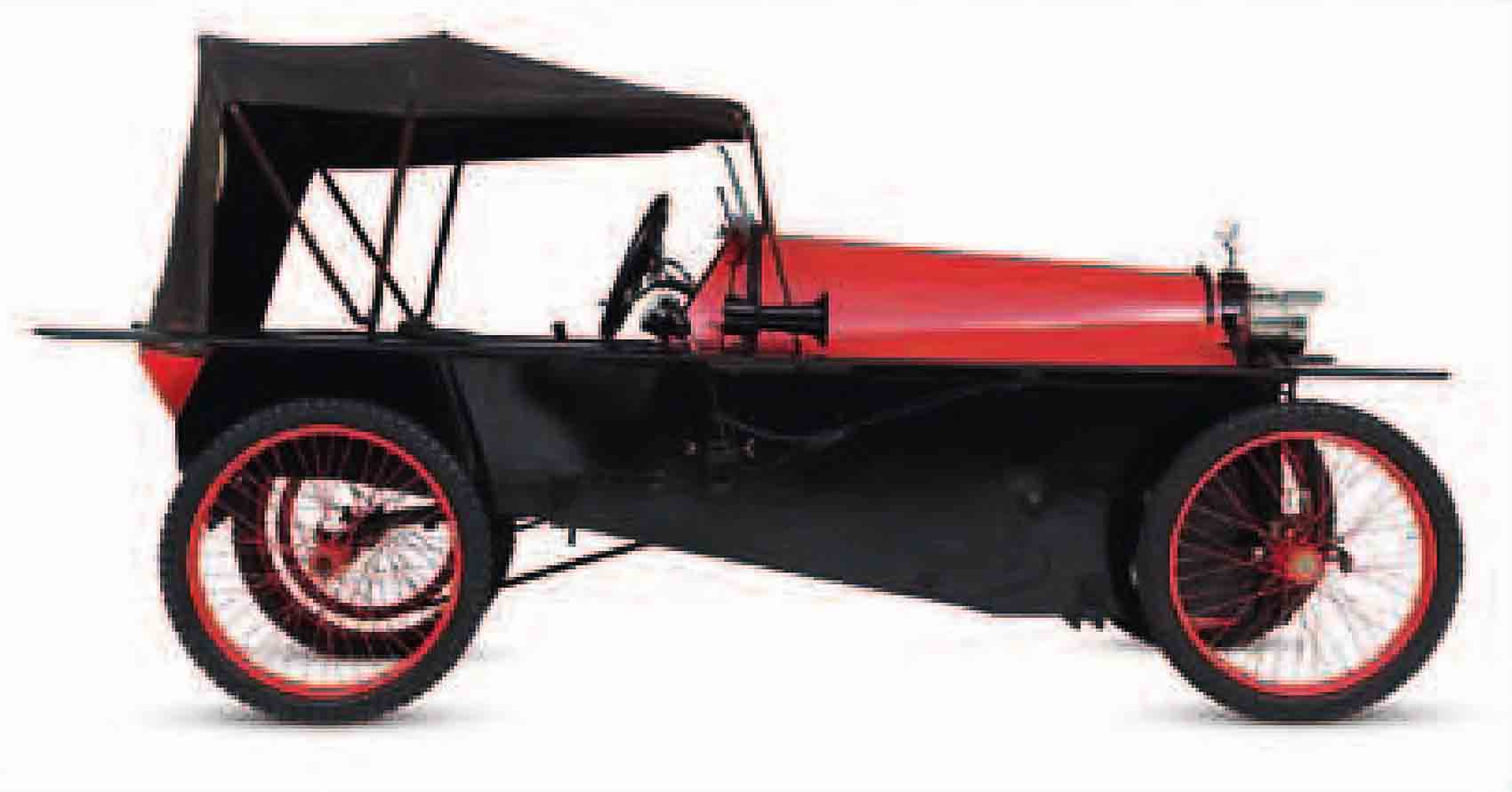
| Origin | UK |
| Engine | 980 cc, V2 |
| Top speed | 42 mph (68 km/h) |
Edward Tamplin bought the rights to the Carden cyclecar and produced it under his own name. It had a JAP engine on the side, an oiled fiberboard body, and tandem seats.
Leyat Helica (replica), 1919
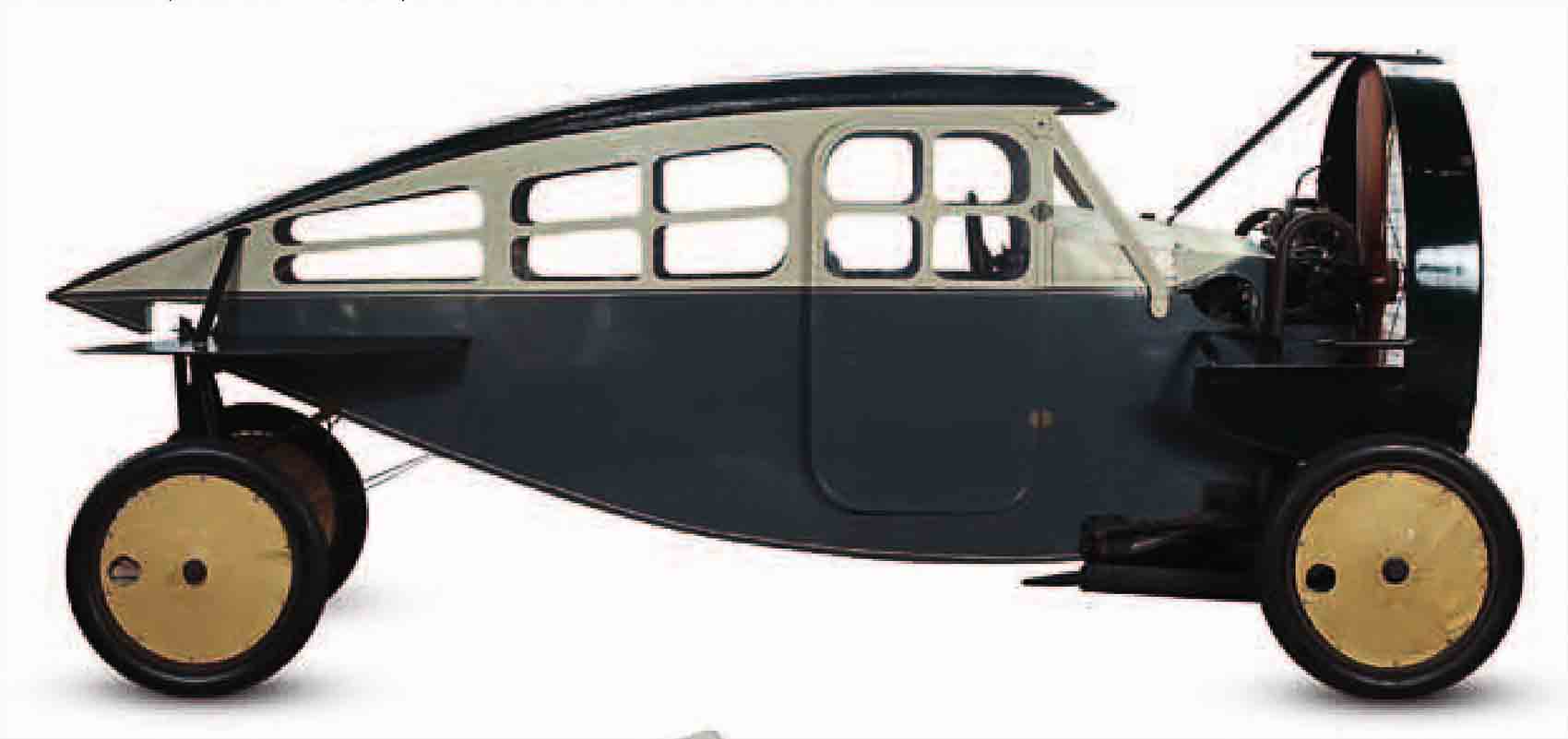
| Origin | France |
| Engine | 1,203 cc, fan-three |
| Top speed | 60 mph (97 km/h) |
Marcel Leyat’s vision for motorized road transport was a propeller-driven “plane without wings.” It had a light body, tandem seating, and rear-wheel steering. Only 30 were sold.
Citroën Type C 5CV, 1922
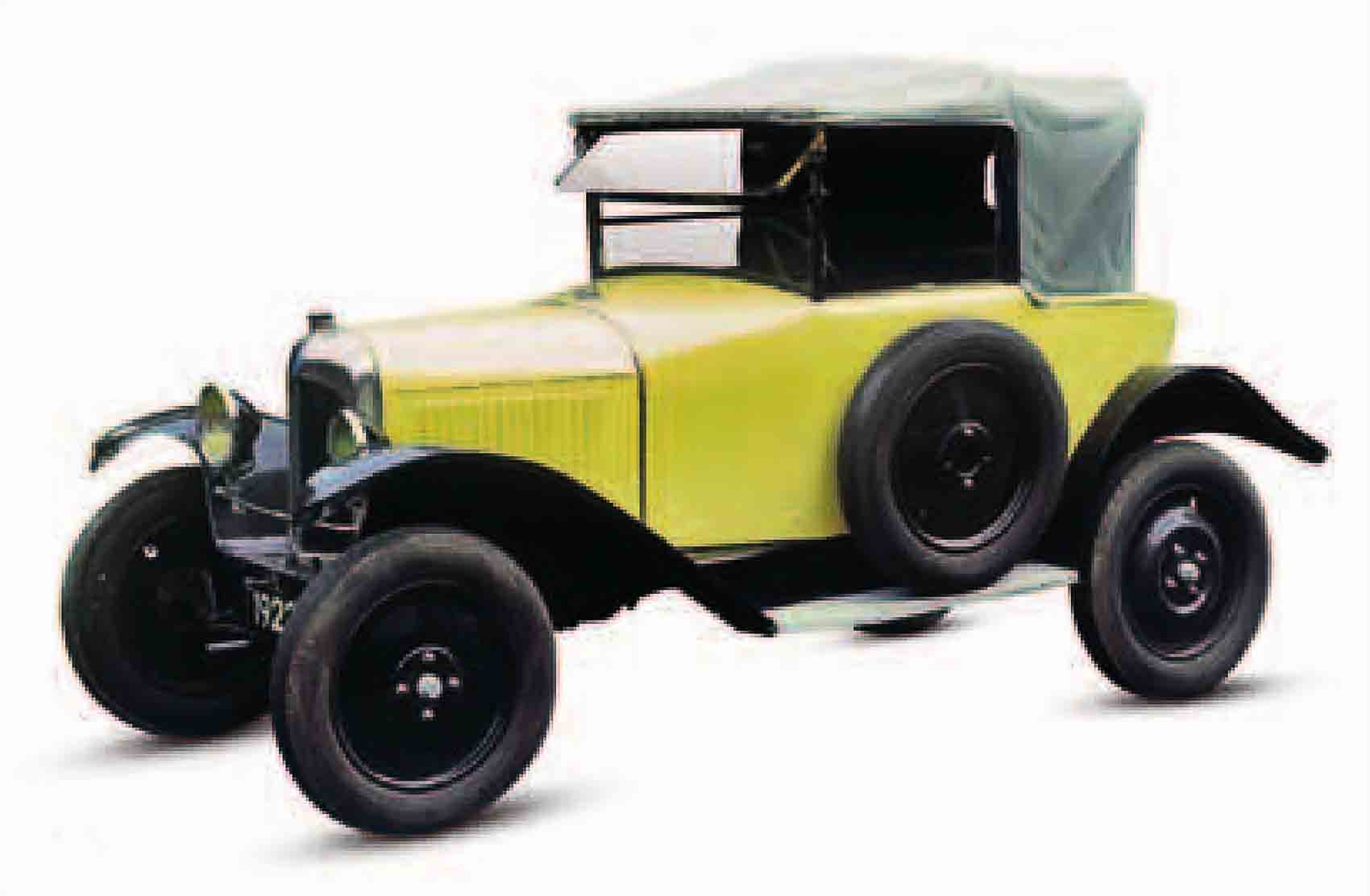
| Origin | France |
| Engine | 856 cc, straight-four |
| Top speed | 38 mph (61 km/h) |
The two- (later three-) seater Type C was promoted as being ideal for female drivers, since it had an electric starter rather than a hand crank. The marketing ploy worked, and about 81,000 were sold in four years.
SIMA-Violet, 1924
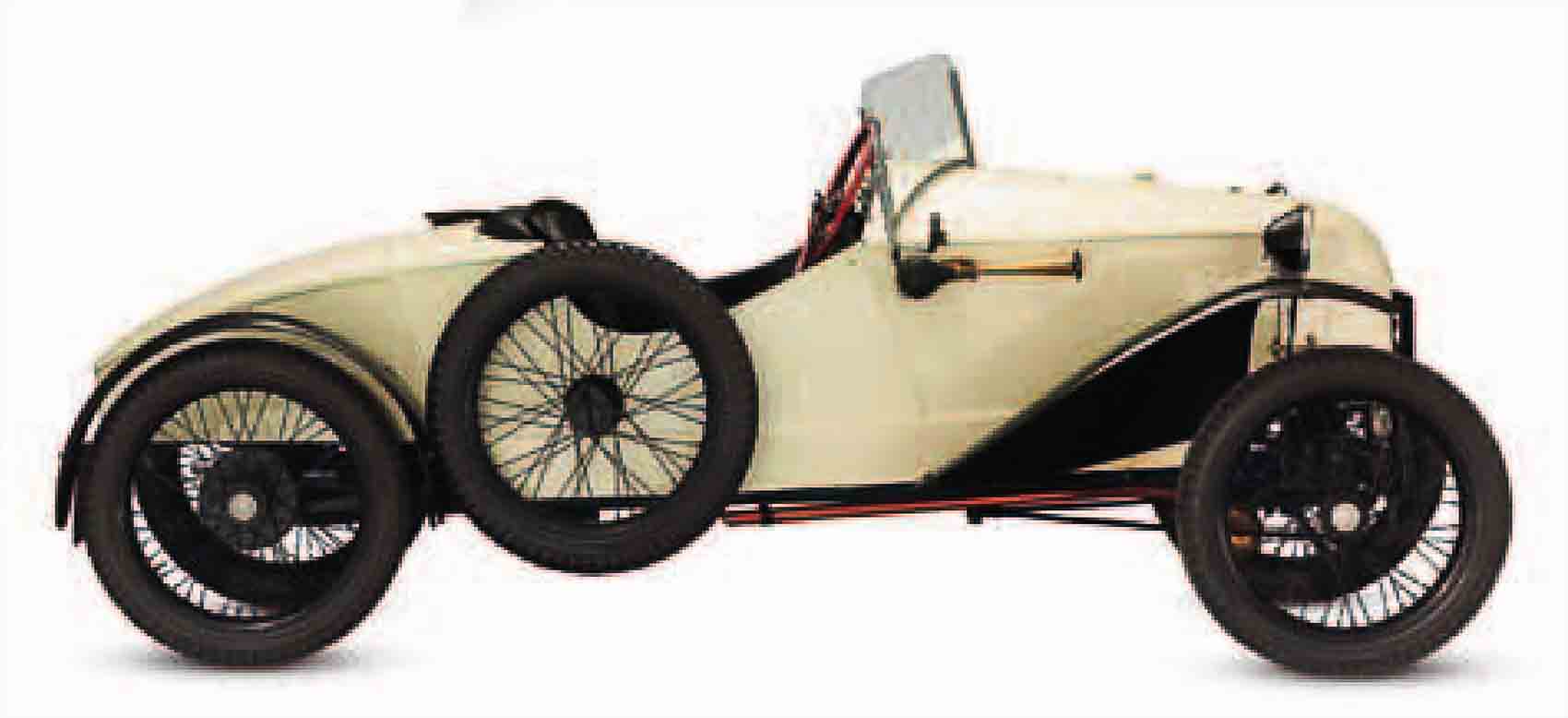
| Origin | France |
| Engine | 496 cc, flat-two |
| Top speed | 68 mph (109 km/h) |
This narrow, two-seat cyclecar had a plywood body on a tubular-steel frame. It performed well, especially with its two-stroke engine upgraded to 750 or even 1,500 cc for competition purposes.
Trojan 10HP PB, 1922
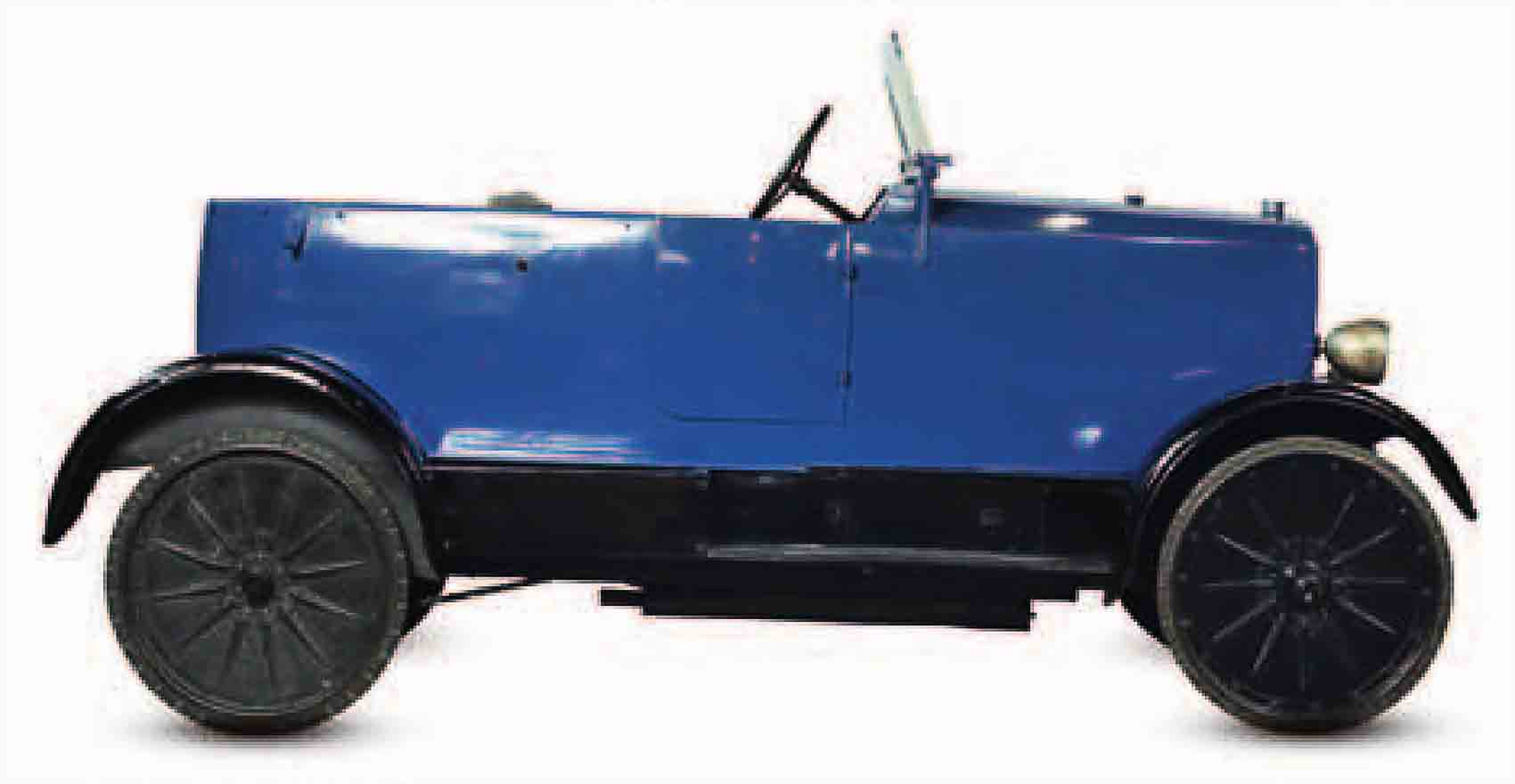
| Origin | UK |
| Engine | 1,488 cc, square-four |
| Top speed | 41 mph (66 km/h) |
Based on a 1913 prototype, the very cheap Trojan-with an ultra-simple underfloor engine, two-speed epicyclic gearbox, and solid tires-was made until 1930.
Hanomag 2/10PS, 1925
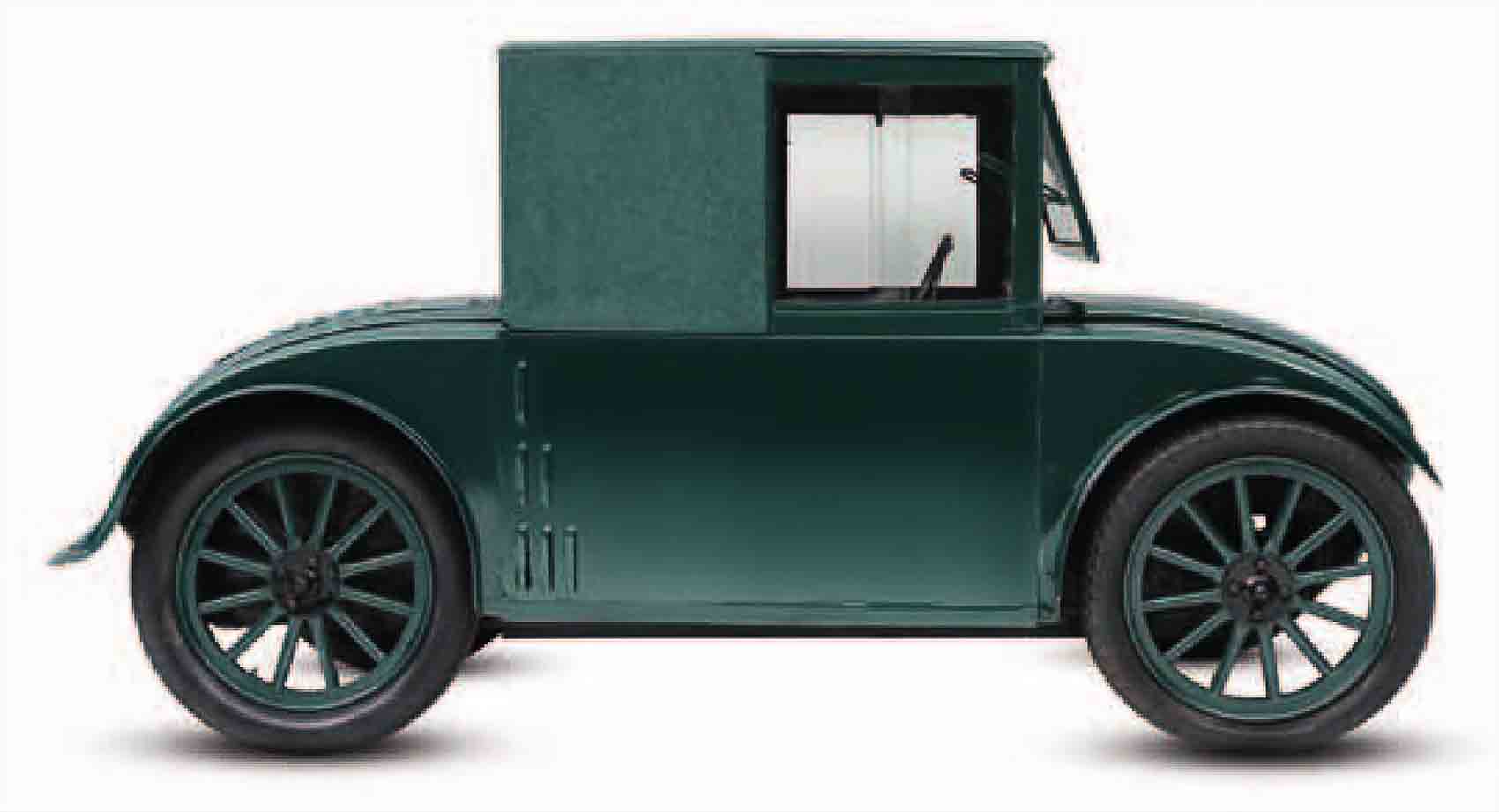
| Origin | Germany |
| Engine | 503 cc, one-cylinder |
| Top speed | 40 mph (64 km/h) |
Hanomag started making steam engines in 1835, turning to gas-engined cars in the 1920s. The bizarre looks of this model won it the nickname Kommissbrot, after a loaf of army bread, but also limited sales.
Morgan-JAP Aero, 1929
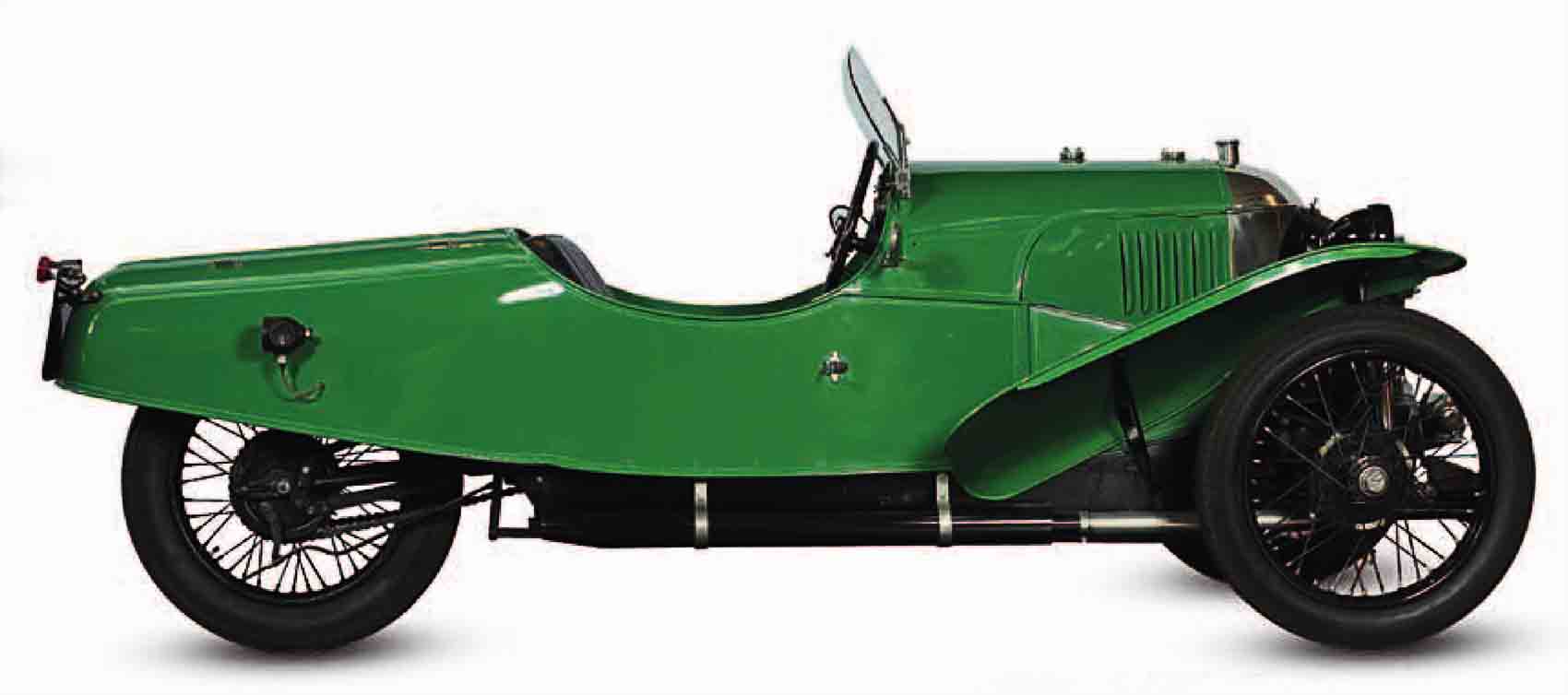
| Origin | UK |
| Engine | 1,096 cc, V2 |
| Top speed | 70 mph (113 km/h) |
With a front-mounted, V-twin engine and single rear-wheel drive, the sporty Aero was the latest in Morgan’s long line of excellent three-wheelers that began in 1910.
Dixi 3/15PS, 1927
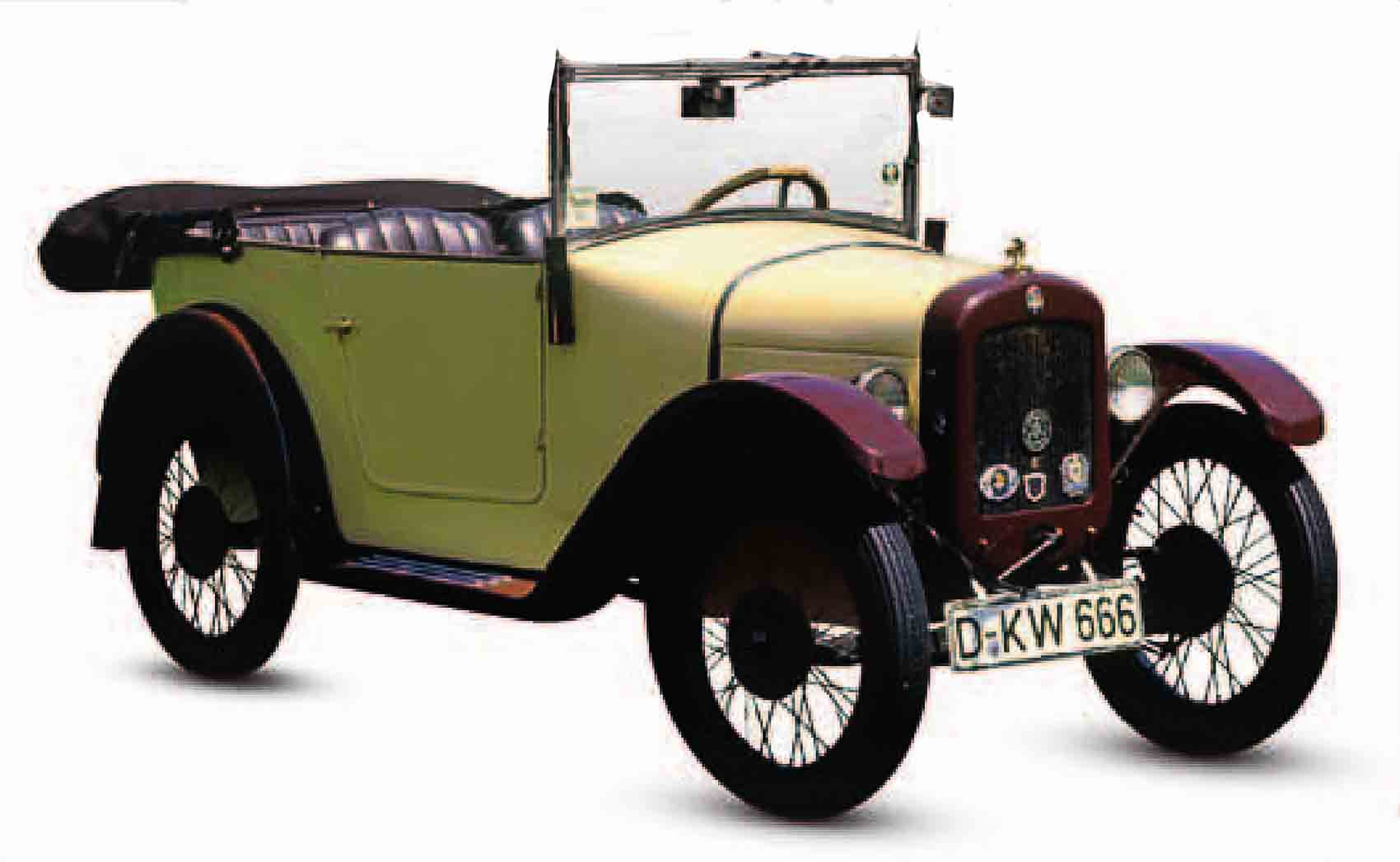
| Origin | Germany |
| Engine | 747 cc, straight-four |
| Top speed | 48 mph (77 km/h) |
Dixi of Eisenach built the Austin Seven under license as the 3/15PS. When BMW took over Dixi in 1928, the 3/15PS became BMW’s first car. It remained in production until 1932.
Opel 4/12, 1924
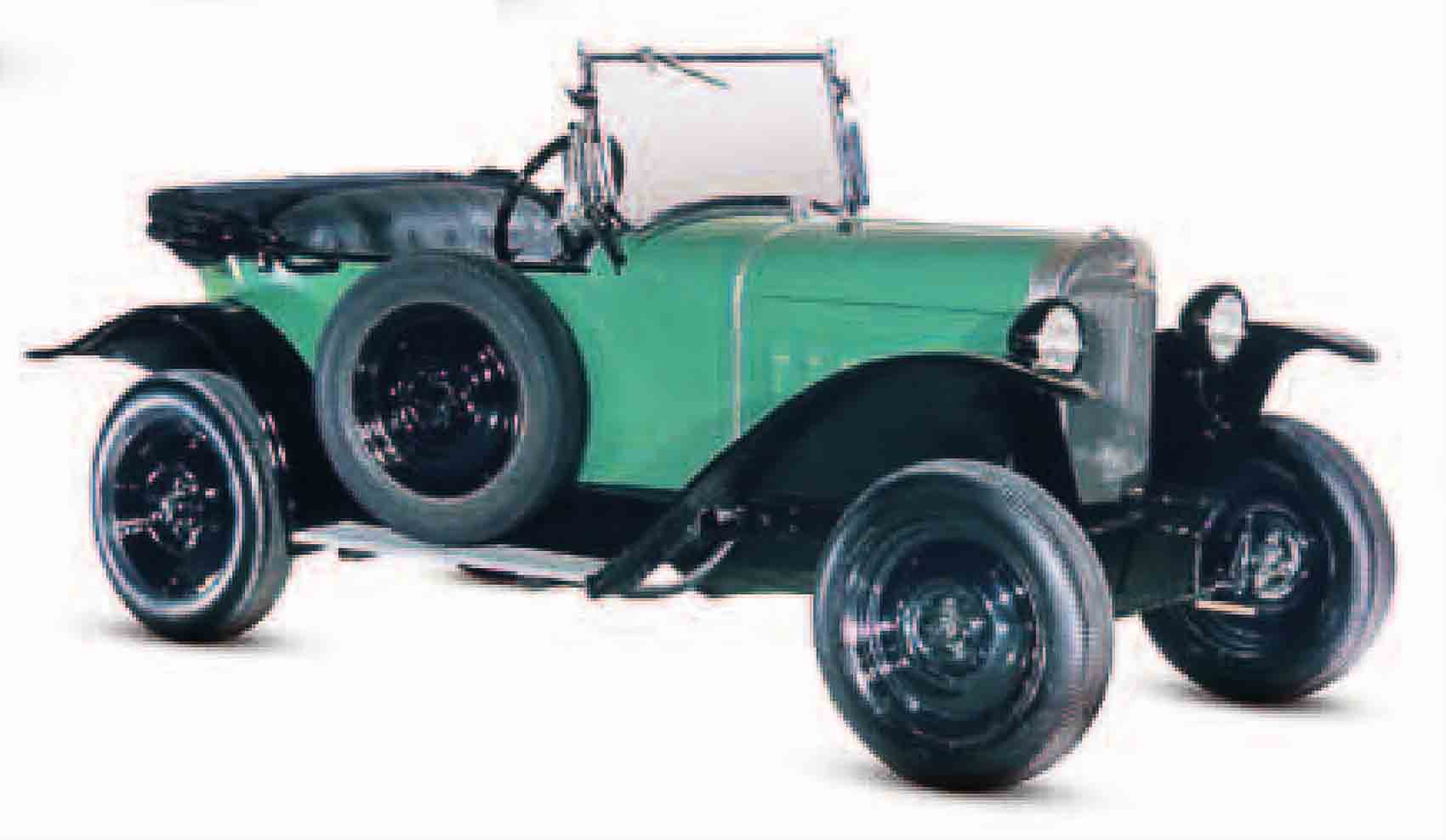
| Origin | Germany |
| Engine | 951 cc, straight-four |
| Top speed | 45 mph (72 km/h) |
This little two-seater, named the Laubfrosch (tree frog), was built on a production line inspired by the one at Ford. A three-seater followed in 1924, and a four-seater in 1925.
Triumph Super Seven, 1927
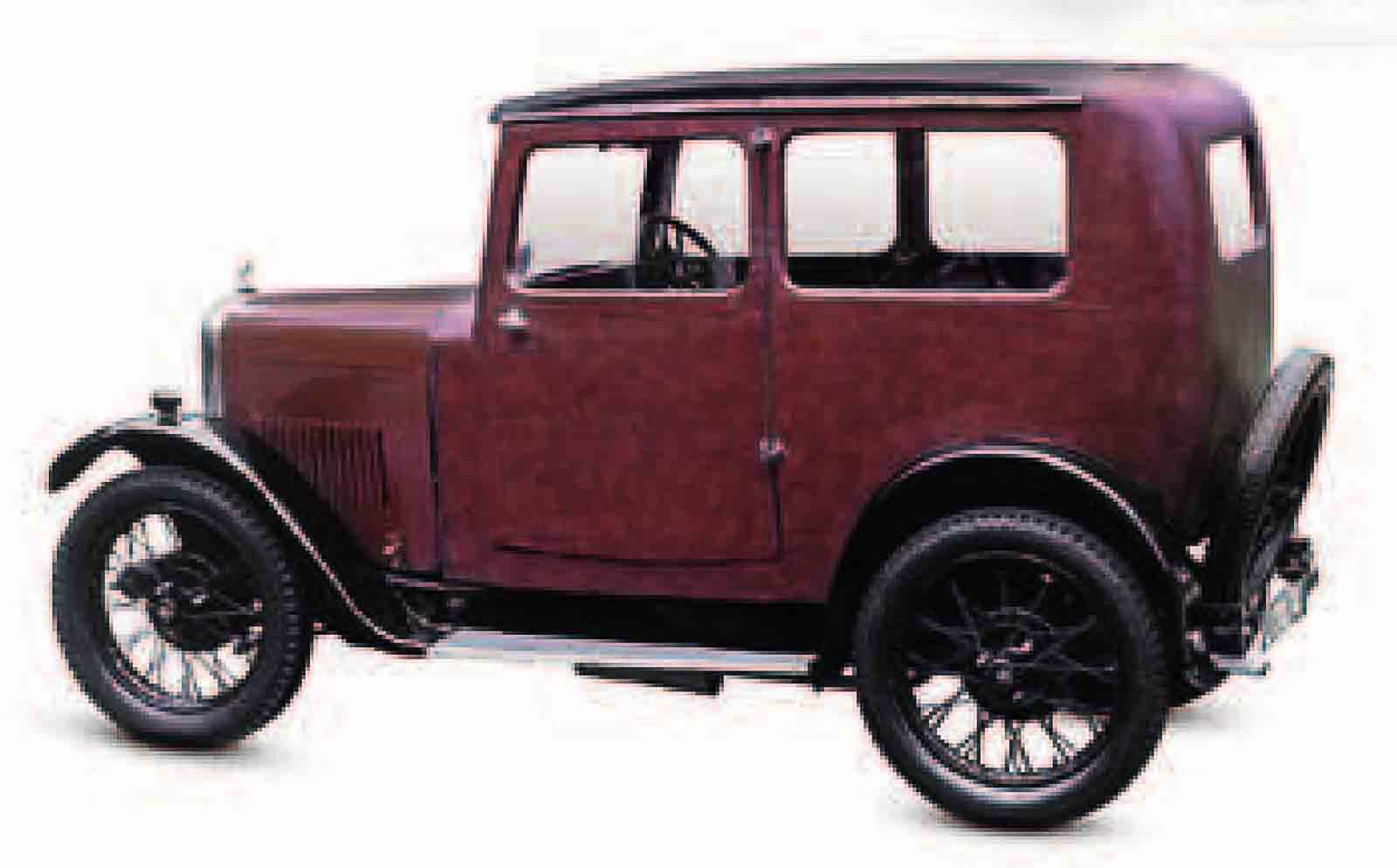
| Origin | UK |
| Engine | 832 cc, straight-four |
| Top speed | 50 mph (80 km/h) |
Triumph’s response to the Austin Seven was the slightly larger and more powerful Super Seven. In competition, it took seventh place in the Monte Carlo Rally of 1930.
Morris Minor, 1928
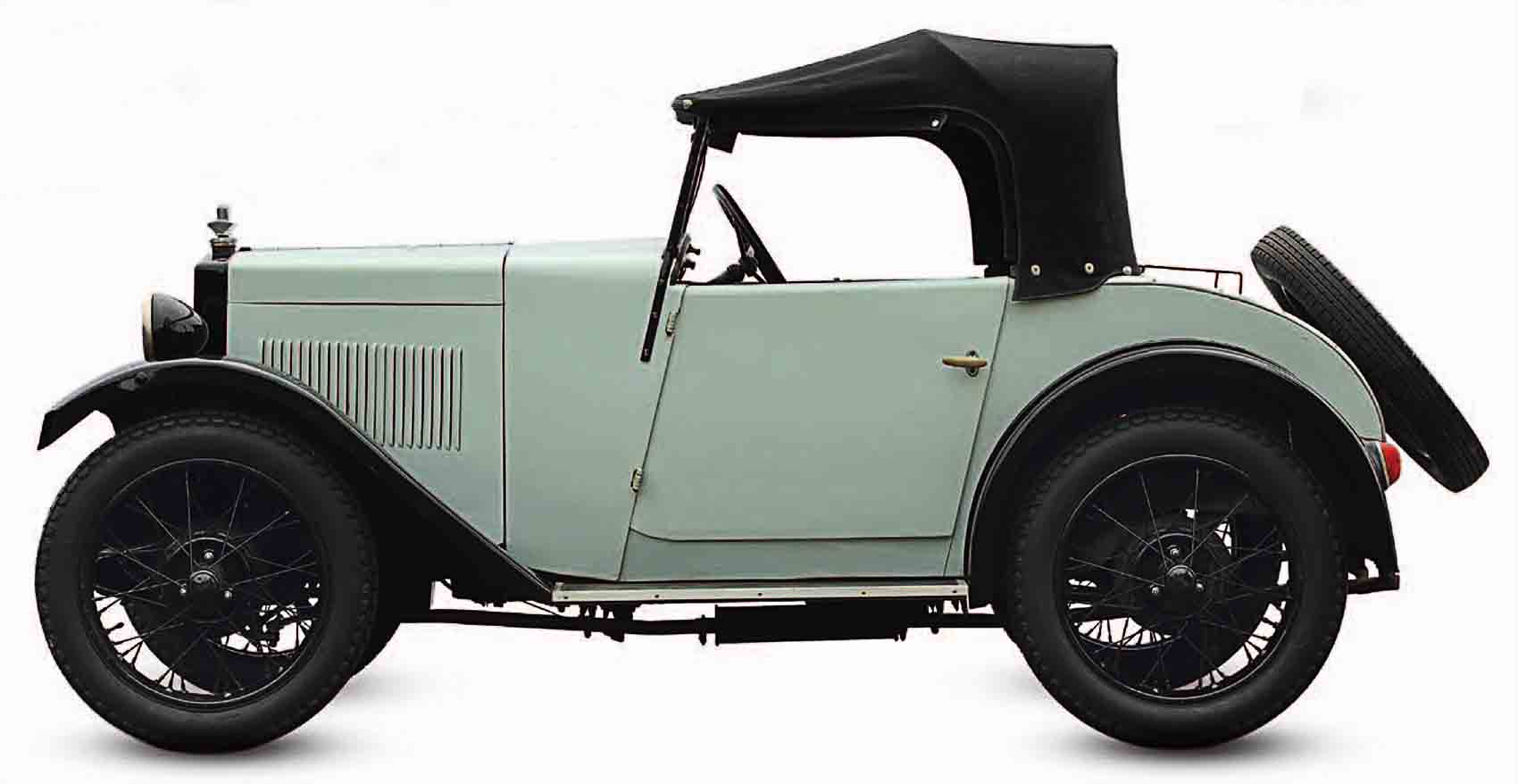
| Origin | UK |
| Engine | 847 cc, straight-four |
| Top speed | 50 mph (80 km/h) |
Larger and more user-friendly than the Austin Seven, and with a modern overhead-camshaft engine, the Minor was the first of Morris’s successful economy cars.
It is a quote. The Definitive Visual History Of The Automobile 2011




